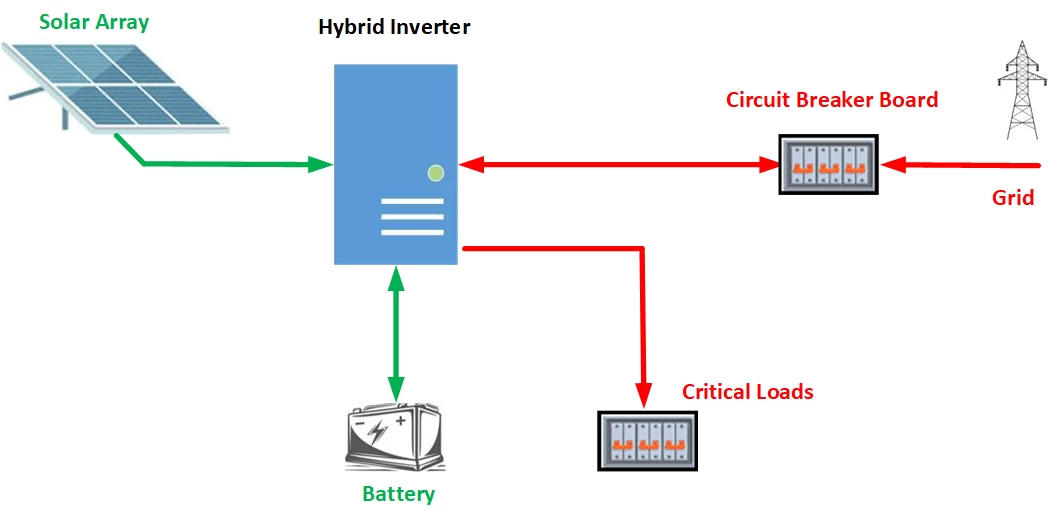Hybrid Systems
A hybrid system is one that has all four of the following; an A/C input, an inverter/charger, a battery bank and some alternatice energy sourse such as solar panels, wind generator etc. This is the typical system for household solar in New Zealand when connected to the grid. It may or may not use a hybrid inverter for its central processing, but most often it does. There are lots of ways to configure a hybrid system and many manufacturers are in the game.
Hybrid inverters are connected directly to the solar panels via their MPPT input ports, to a battery bank, and to the grid. An inverter/charger model is housed within. The household supply is fed from a combination of these, automatically coordinated by the unit's electronic modules. There may be an additional AC output port, supplying a limited amount of power for critical load purposes during a grid failure. Generally, you have the option of exporting excessive PV energy back to the grid, but with batteries, this is rarely necessary.
There are operational parameters to be set up at the time of system commissioning. Although every inverter is different they all have some essential parameter settings in common: a low-capacity setting for the batteries so that they are never discharged below a certain level; various priority settings to oversee the distribution of energy sources; and various battery charge/discharge regimes. There should be settings for mains charging operations and, ideally, provision for a user to force-charge when the batteries need to be fully charged.
The diagram below shows a typical basic layout. The household circuit/breaker board is divided into two segments; the main household loads, and a critical load section which will supply power when there's no grid (providing there is energy in the battery bank). The DC side of the diagrams are shown in green and the AC side in red.
Basic schematic diagram of a typical hybrid installation

Hybrid inverters are either high or low-voltage models. High voltage refers to the 300-odd DC volts of most lithium battery packs, which are more efficient, suffer less from cable losses than low voltage units, and are by far the most common. Low voltage models are typically connected to a 48v battery bank (in a household situation), which may be either lead-acid or lithium. An important difference between the two is that lithium packs come complete with a battery management system (BMS), and lead-acids don’t, and this can have serious implications for the system's operation. Most hybrid systems will be connected with a lithium pack, either high or low voltage.
There are not many hybrids that are lead-acid compatible. If you use one, it must have a Battery Management System so that the batteries are correctly charged. The other potential issue with this arrangement is charging the battery bank from the grid, which is an essential feature in times of low available solar energy. I've only had experience with lead-acid coupled hybrid inverters, and neither was able to charge from the grid. And if you're contemplating this arrangement, be advised to check that this feature is operational.
Some hybrids come in a modular design housing the hybrid inverter, Battery Management System plus extendable lithium battery modules in a single tower. This is a very tidy and sleek package that is easy to install and looks especially nice in a modern home.
The system will come with an online data monitoring and/or control service. Make sure this is fully functional after the system is commissioned, and that you understand what it all means. As well as providing the user with valuable information regards the system operation, this is what your provider will rely on when things go wrong and for periodic operation checks.